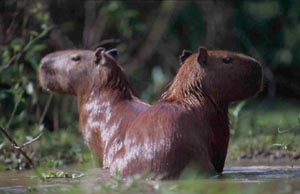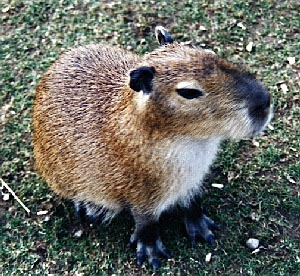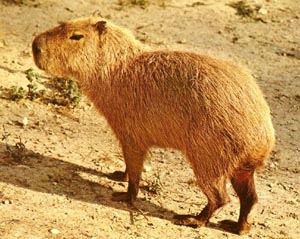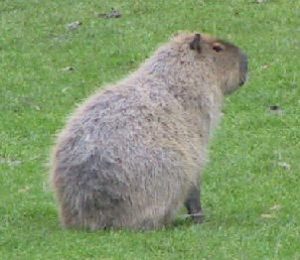Difference between revisions of "Teica"
From World of Entorais Wiki
Jump to navigationJump to searchm (→Overview: content) |
m (content and layout) |
||
| Line 1: | Line 1: | ||
[[File:common_teica.png|thumb|300x|right|Common Teica]] | |||
[[File: | [[File:marsh_teica.png|thumb|300x|right|Common Teica]] | ||
[[File:wood_teica.png|thumb|300x|right|Common Teica]] | |||
[[File:desert_teica.png|thumb|300x|right|Common Teica]] | |||
[[File:wooly_teica.png|thumb|300x|right|Common Teica]] | |||
=Overview= | |||
:Teica are used as a primary livestock, and its wooly hair for use in the manufacture of clothing. | |||
;Common Names: Teica (Waejir), Tëka (Kythus) | ;Common Names: Teica (Waejir), Tëka (Kythus) | ||
=Description= | |||
;Classification:mammal | ;Classification:mammal | ||
;Size: | ;Size:Adults 35 – 66 kilograms (70-130 pounds), 0.75 metres (2 feet 6 inches) at the shoulder, and 1.2 metre (3 feet 6 inches) body length. | ||
;Appearance: | ;Appearance: | ||
;Sexual dimorphism: | ;Sexual dimorphism:No notable difference between the sexes. | ||
;Variance: | ;Variance:Wild tika will still have the goring tusks used for uprooting edible roots, and other food. These tusks are pulled in young domestics to prevent injury to handlers. | ||
=Ecology= | |||
;Habitat: | ;Habitat: | ||
;Diet: | ;Diet:Herbivores. Roots, mushrooms, nuts, grasses and other plant material. | ||
=Behaviour= | |||
;Social grouping: | ;Social grouping:Small family herds up to a dozen members. Larger herds in domesticated varieties. | ||
;Temperament: | ;Temperament:Wary. | ||
;Intelligence: | ;Intelligence:Animal. | ||
;Reproduction:<--method, cycles, associated behaviours--> | ;Reproduction:<--method, cycles, associated behaviours--> | ||
=Sub-Species= | |||
==Common Teica== | |||
Domesticated variety raised primarily as food stock. They tend to the brown haired, black legged and faced colours typical of the species. | :Domesticated variety raised primarily as food stock. They tend to the brown haired, black legged and faced colours typical of the species. | ||
==Desert Teica== | |||
Light brown with sandy tones on the legs and belly. A leaner bodied species well adapted to arid climates. | :Light brown with sandy tones on the legs and belly. A leaner bodied species well adapted to arid climates. | ||
==Marsh Teica== | |||
Dark brown nearly black all over, this wild species is common in marshlands and boggier swamps. They have webbed toes making them passable swimmers. | :Dark brown nearly black all over, this wild species is common in marshlands and boggier swamps. They have webbed toes making them passable swimmers. | ||
==Red Teica== | |||
Red-brown in colour, with a lighter belly and neck. This species tends to hilly and flat lands of a temperature clime. | :Red-brown in colour, with a lighter belly and neck. This species tends to hilly and flat lands of a temperature clime. | ||
==Woods Teica== | |||
Brown with black face and legs, and a white or cream coloured neck and belly. | :Brown with black face and legs, and a white or cream coloured neck and belly. | ||
==Wooly Teica== | |||
Very coarse wooly coat of grey brown colour, with dark legs and face typical of their shorter haired cousins. This species is domesticated as a textile producer. Their hair is sheared, combed and collected for the production of woollen goods. | :Very coarse wooly coat of grey brown colour, with dark legs and face typical of their shorter haired cousins. This species is domesticated as a textile producer. Their hair is sheared, combed and collected for the production of woollen goods. | ||
=Domestication= | |||
;General:<--brief note about domestication--> | ;General:<--brief note about domestication--> | ||
;Resources:<--resources obtained from domestication--> | ;Resources:<--resources obtained from domestication--> | ||
=See Also= | |||
<--links to related material--> | <!--links to related material--> | ||
[[Category:Fauna]] | [[Category:Fauna]] | ||
[[Category:Mammal]] | [[Category:Mammal]] | ||
Revision as of 21:05, 19 May 2019
File:Common teica.png
Common Teica
Overview
- Teica are used as a primary livestock, and its wooly hair for use in the manufacture of clothing.
- Common Names
- Teica (Waejir), Tëka (Kythus)
Description
- Classification
- mammal
- Size
- Adults 35 – 66 kilograms (70-130 pounds), 0.75 metres (2 feet 6 inches) at the shoulder, and 1.2 metre (3 feet 6 inches) body length.
- Appearance
- Sexual dimorphism
- No notable difference between the sexes.
- Variance
- Wild tika will still have the goring tusks used for uprooting edible roots, and other food. These tusks are pulled in young domestics to prevent injury to handlers.
Ecology
- Habitat
- Diet
- Herbivores. Roots, mushrooms, nuts, grasses and other plant material.
Behaviour
- Social grouping
- Small family herds up to a dozen members. Larger herds in domesticated varieties.
- Temperament
- Wary.
- Intelligence
- Animal.
- Reproduction
- <--method, cycles, associated behaviours-->
Sub-Species
Common Teica
- Domesticated variety raised primarily as food stock. They tend to the brown haired, black legged and faced colours typical of the species.
Desert Teica
- Light brown with sandy tones on the legs and belly. A leaner bodied species well adapted to arid climates.
Marsh Teica
- Dark brown nearly black all over, this wild species is common in marshlands and boggier swamps. They have webbed toes making them passable swimmers.
Red Teica
- Red-brown in colour, with a lighter belly and neck. This species tends to hilly and flat lands of a temperature clime.
Woods Teica
- Brown with black face and legs, and a white or cream coloured neck and belly.
Wooly Teica
- Very coarse wooly coat of grey brown colour, with dark legs and face typical of their shorter haired cousins. This species is domesticated as a textile producer. Their hair is sheared, combed and collected for the production of woollen goods.
Domestication
- General
- <--brief note about domestication-->
- Resources
- <--resources obtained from domestication-->



